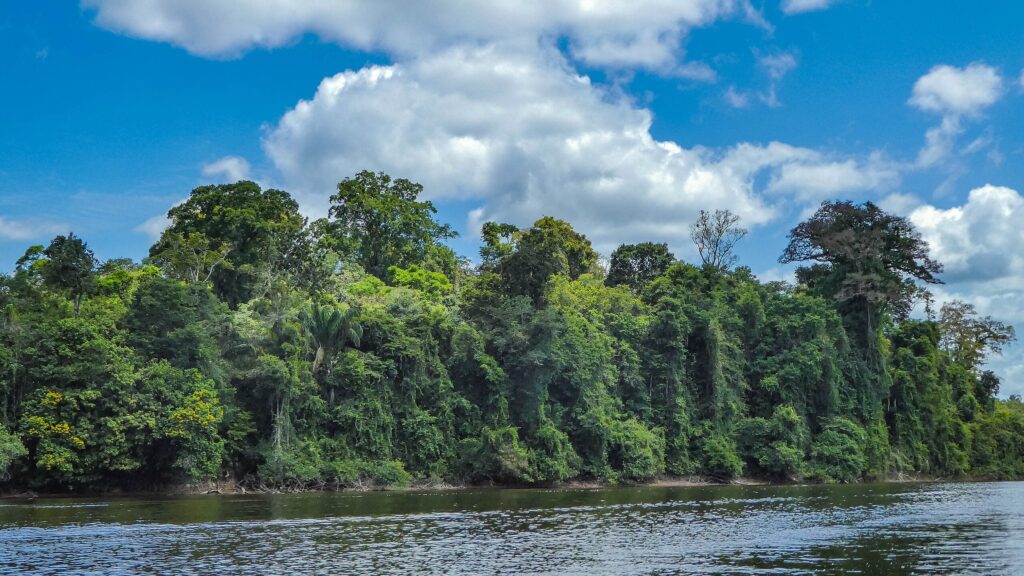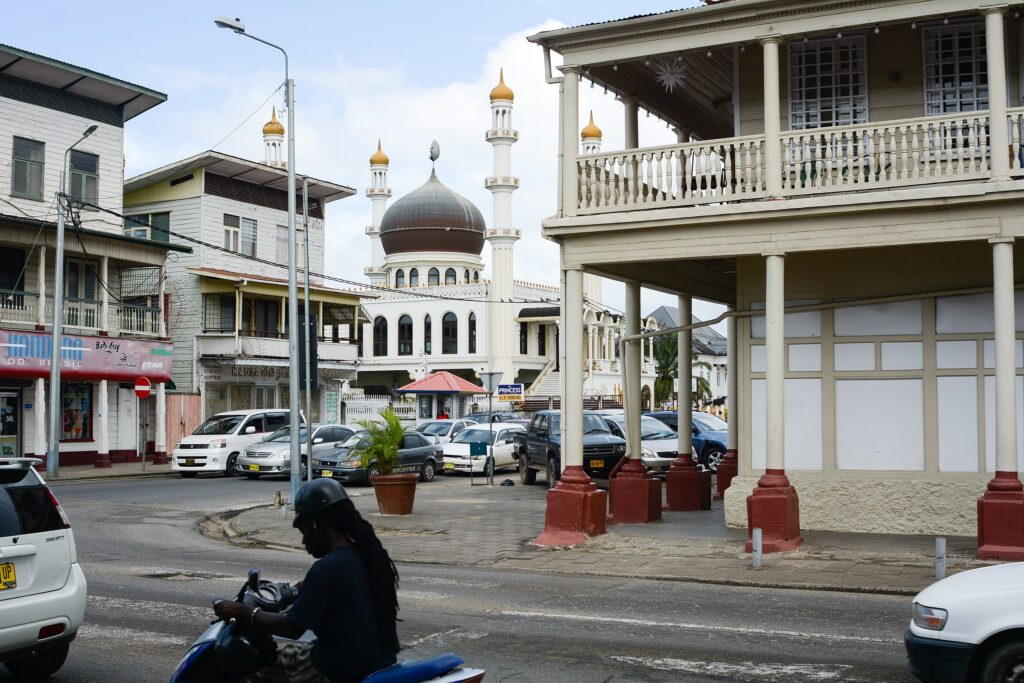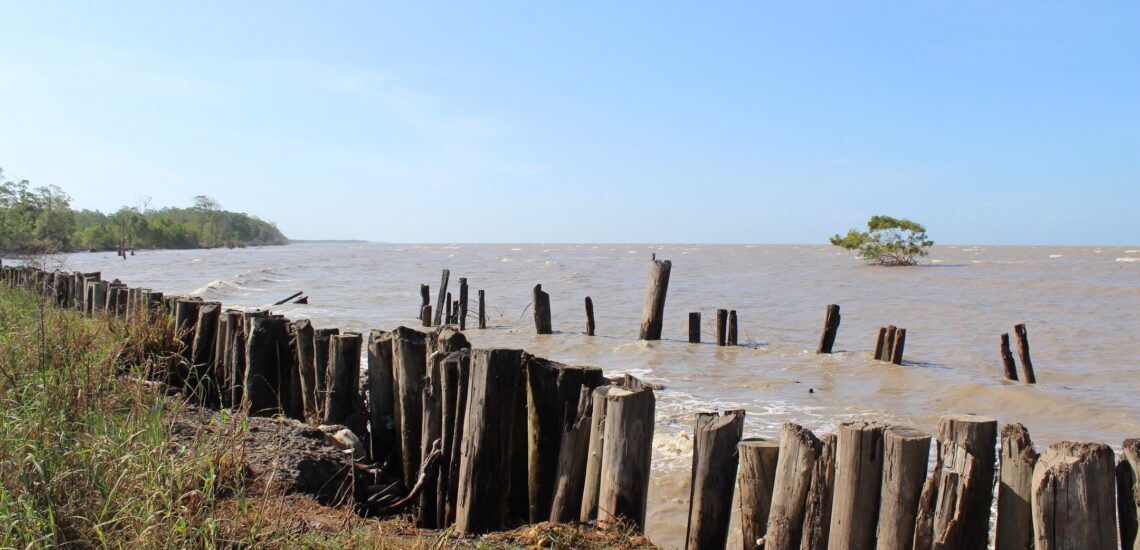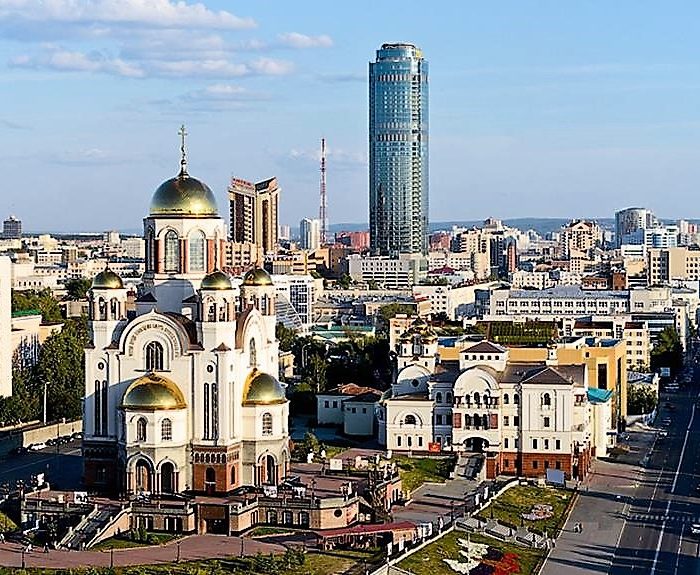10 Interesting Facts About Suriname
Quick facts about Suriname:
- Population: Approximately 620,000 people.
- Capital: Paramaribo.
- Official Language: Dutch.
- Currency: Surinamese Dollar (SRD).
- Government: Unitary parliamentary republic.
- Major Religion: Christianity, Hinduism, and Islam.
- Geography: Situated on the northeastern coast of South America, Suriname is known for its dense rainforests and diverse wildlife, covering an area of about 163,820 square kilometers.
Fact 1: Suriname is one of the most forested countries
Suriname stands out as one of the most densely forested countries, with extensive jungle covering approximately 80% of its territory. This equates to around 14.8 million hectares (36.6 million acres) of lush tropical rainforests, making Suriname a vital component of the Amazon basin’s biodiversity.
 -JvL- from Netherlands, CC BY 2.0, via Wikimedia Commons
-JvL- from Netherlands, CC BY 2.0, via Wikimedia CommonsFact 2: Suriname was formerly a Dutch colony
Suriname was formerly a Dutch colony known as Dutch Guiana. Dutch colonization began in the 17th century, with the establishment of plantations for sugarcane, coffee, and cocoa production, utilizing enslaved labor from Africa and the indigenous population.
As a result of Dutch colonization, Dutch became the official language of Suriname. Today, Suriname remains the only country in the Americas where Dutch is spoken as an official language, alongside Sranan Tongo, Hindustani, and other languages reflecting its diverse ethnic composition.
Suriname gained independence from the Netherlands on November 25, 1975, and has since developed into a multicultural society, characterized by its rich blend of languages, cultures, and traditions shaped by its colonial history.
Fact 3: The historic center of Suriname’s capital is a UNESCO site
About half of Suriname’s residents live in the capital city. Paramaribo, is recognized as a UNESCO World Heritage Site.This designation acknowledges the city’s outstanding universal value due to its well-preserved colonial architecture and urban layout, which reflect the diverse cultural influences that have shaped Suriname’s history.
Paramaribo’s historic center features a unique blend of Dutch, British, French, and indigenous architectural styles, showcasing its rich cultural heritage and serving as a testament to its colonial past. The area is characterized by its picturesque streets lined with wooden colonial buildings, historic landmarks, and vibrant markets, offering visitors a glimpse into Suriname’s fascinating history and multicultural identity.
 Rafaeljantz, CC BY-SA 4.0, via Wikimedia Commons
Rafaeljantz, CC BY-SA 4.0, via Wikimedia CommonsFact 4: Suriname has a diverse ethnic and religious population
The country’s demographic composition includes people of Indigenous, African, Indian, Javanese, Chinese, European, and mixed-race descent, contributing to its vibrant and multicultural society.
This diversity is also reflected in Suriname’s religious landscape, with adherents of various faiths coexisting harmoniously. Christianity, Hinduism, Islam, and indigenous belief systems are among the major religions practiced in Suriname, each playing a significant role in shaping the country’s cultural traditions, festivals, and social norms.
Suriname’s ethnic and religious diversity is celebrated through cultural festivals, culinary traditions, and religious ceremonies, fostering a sense of unity and mutual respect among its inhabitants.
Fact 5: Suriname has one of the largest nature reserves
Suriname is home to one of the largest nature reserves in the world, Central Suriname Nature Reserve, which is recognized as a UNESCO World Heritage Site. This vast protected area covers approximately 1.6 million hectares (about 4 million acres) of pristine tropical rainforest, representing around 12% of Suriname’s total land area.
Central Suriname Nature Reserve encompasses diverse ecosystems, including lowland tropical rainforests, montane forests, savannas, and wetlands, harboring an unparalleled richness of plant and animal species. The reserve serves as a vital habitat for numerous endemic and endangered species, including jaguars, giant otters, harpy eagles, and various species of monkeys, birds, and reptiles.
 -JvL- from Netherlands, CC BY 2.0, via Wikimedia Commons
-JvL- from Netherlands, CC BY 2.0, via Wikimedia CommonsFact 6: Because of the religious diversity, Suriname hosts a variety of festivals
With adherents of Christianity, Hinduism, Islam, indigenous religions, and other faiths coexisting harmoniously, the country hosts a rich array of religious and cultural festivals throughout the year.
Christian festivals such as Christmas, Easter, and Pentecost are widely celebrated, often accompanied by traditional rituals, music, and feasting. Hindu festivals like Diwali (Festival of Lights), Phagwah (Holi), and Divali (Diwali) are significant events, marked by colorful processions, performances, and the lighting of diyas (oil lamps). Similarly, Islamic festivals such as Eid al-Fitr and Eid al-Adha are observed with prayers, feasting, and acts of charity.
Indigenous communities also commemorate their cultural heritage through festivals that honor nature, ancestors, and traditional customs. These celebrations often include rituals, dances, and ceremonies that connect participants with their cultural roots and foster a sense of belonging.
Fact 7: Suriname has only one cinema
Suriname’s sole cinema, TBL Cinemas, opened its doors in Paramaribo, the capital city, in 2014. The establishment of this cinema marked a significant milestone in Suriname’s entertainment industry, providing a modern venue for film screenings and cultural events.
The presence of only one cinema in Suriname can be attributed to various factors, including the country’s relatively small population and limited market demand for cinema entertainment. Additionally, economic considerations and logistical challenges may have influenced the decision-making process for opening additional cinemas.
Fact 8: Suriname has its own genres of music and dance
One of Suriname’s most renowned music genres is Kaseko, a lively and rhythmic style that blends African, European, and indigenous influences. Originating from the Afro-Surinamese community, Kaseko features infectious beats, call-and-response vocals, and a fusion of traditional and modern instruments such as drums, saxophones, and guitars. This genre is often accompanied by energetic dance routines that celebrate community spirit and cultural pride.
Another distinctive music genre in Suriname is Kawina, which originated from the Creole Maroon communities. Characterized by its pulsating rhythms and hypnotic melodies, Kawina incorporates elements of traditional African music, including drumming and chanting. Often performed during cultural ceremonies and celebrations, Kawina music and dance serve as a means of preserving Maroon heritage and expressing solidarity among community members.
Suriname is also home to a vibrant Hindustani music scene, influenced by the country’s East Indian population. Bhaitak Gana and Baithak Gana are popular Hindustani music styles that feature melodious vocals, accompanied by harmonium and tabla instruments. These genres are often performed at religious gatherings, weddings, and social events, reflecting the cultural traditions of Suriname’s Indo-Surinamese community.
Fact 9: Suriname is the only American country with left-handed traffic
Suriname is the only country in the Americas where left-handed traffic is observed. This means that vehicles drive on the left side of the road, with right-hand drive vehicles being the norm. The historical origins of this traffic system can be traced back to Suriname’s colonial past under Dutch rule. While the Netherlands, Suriname’s former colonial power, switched to right-hand traffic in 1906, Suriname likely inherited its left-hand traffic tradition from its colonial past. Despite being an outlier in the region, Suriname has successfully adapted to left-hand traffic, with road signs, traffic regulations, and infrastructure designed accordingly.
Note: If you plan to visit the country, check if you need an International Driver’s License in Suriname to drive.
 M M from Switzerland, CC BY-SA 2.0, via Wikimedia Commons
M M from Switzerland, CC BY-SA 2.0, via Wikimedia CommonsFact 10: In Suriname, gold mining has historically been an important part of the economy
In Suriname, gold mining has played a significant role in shaping the economy throughout its history. With rich deposits of gold scattered across the country’s diverse terrain, mining has been a vital economic activity, contributing to employment opportunities and revenue generation. The allure of gold has attracted miners from various parts of the world, leading to the establishment of numerous mining operations and communities. However, the industry also brings environmental and social challenges, including deforestation, pollution, and conflicts over land rights.





